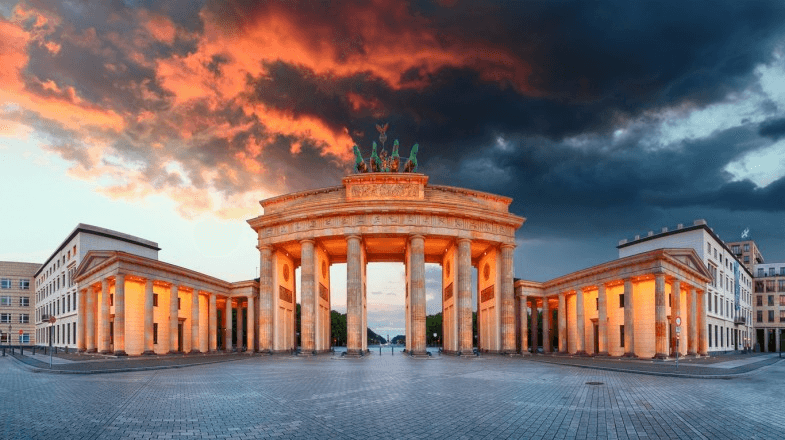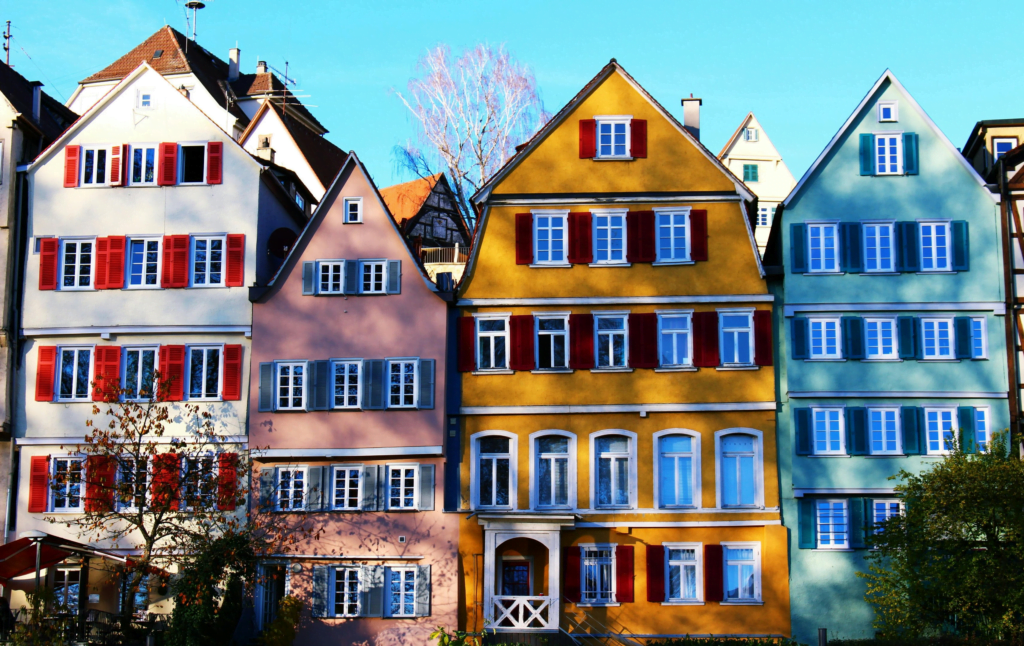
Germany, a country steeped in history, culture, and natural beauty, stands as one of Europe’s most captivating travel destinations. With its fairytale castles, charming medieval towns, vibrant cities, and picturesque landscapes, Germany offers a wide variety of experiences for every traveler. Whether you’re a history enthusiast, an art lover, a nature explorer, or a fan of modern urban life, Germany has something unique for you. In this detailed article, we’ll explore some of the most popular tourist destinations in Germany that should be on every traveler’s itinerary.
1. Berlin: A City of History and Modernity
Berlin, Germany’s capital, is a dynamic city that effortlessly blends history and modernity. It’s a city that has been shaped by wars, divisions, and reunification, and today stands as a symbol of freedom and creativity. From its significant historical landmarks to its cutting-edge art scene, Berlin is a must-visit destination.
- Brandenburg Gate: One of Germany’s most iconic landmarks, the Brandenburg Gate is a symbol of unity and peace. Originally constructed in the late 18th century, it became a poignant symbol during the Cold War era, as it was located near the Berlin Wall. Today, it stands as a testament to Germany’s reunification.
- Berlin Wall Memorial: The Berlin Wall divided East and West Berlin for nearly three decades, and visiting the Berlin Wall Memorial offers insight into the city’s divided past. The East Side Gallery, a preserved section of the wall, is covered in murals by international artists, making it both a historical monument and a canvas for art.
- Museum Island: Located in the heart of Berlin, Museum Island is a UNESCO World Heritage site that houses five world-renowned museums. From ancient Egyptian artifacts to 19th-century art, it’s a cultural treasure trove.
- Checkpoint Charlie: One of the most famous border crossings during the Cold War, Checkpoint Charlie is now a popular tourist site where visitors can learn about the history of espionage, escapes, and political tensions between the East and the West.
2. Munich: Bavaria’s Heart and Soul
Munich, the capital of Bavaria, is a city that perfectly embodies traditional German culture. Known for its stunning architecture, rich history, and vibrant festivals, Munich is a destination that shouldn’t be missed.
- Marienplatz: The central square of Munich, Marienplatz is home to the stunning New Town Hall (Neues Rathaus). The square is known for its famous Glockenspiel, which performs daily at 11 a.m. and 12 p.m., attracting crowds with its delightful mechanical figures.
- Nymphenburg Palace: This grand baroque palace was once the summer residence of Bavarian monarchs. Surrounded by beautiful gardens and lakes, the palace offers a glimpse into the opulent lifestyle of Bavaria’s royalty.
- English Garden (Englischer Garten): One of the largest urban parks in the world, the English Garden is a tranquil oasis in the heart of Munich. From serene lakes to beer gardens, it’s the perfect spot to relax and enjoy the Bavarian way of life.
- Oktoberfest: Munich is synonymous with Oktoberfest, the world’s largest beer festival. Held annually from late September to early October, it’s a celebration of Bavarian culture, complete with traditional music, food, and of course, lots of beer!
3. Neuschwanstein Castle: A Fairytale Come to Life
Nestled in the Bavarian Alps, Neuschwanstein Castle is often called the “fairytale castle” because of its picturesque setting and whimsical architecture. Built by King Ludwig II in the 19th century, the castle was intended as a private retreat and a tribute to Richard Wagner, the king’s favorite composer.
- Architecture: Neuschwanstein’s turrets, spires, and interior rooms are incredibly ornate, reflecting the king’s romanticism and fascination with medieval legends.
- Panoramic Views: The castle is perched on a hilltop, offering breathtaking views of the surrounding forests, mountains, and lakes. It’s especially magical in winter, when the landscape is blanketed in snow.
- Tour Details: Guided tours are available in multiple languages, taking visitors through the king’s private chambers, the Throne Room, and the stunning Singers’ Hall.
4. Heidelberg: Germany’s Romantic Gem
Heidelberg, located on the banks of the Neckar River, is one of Germany’s most picturesque cities. Known for its beautiful castle ruins, ancient university, and charming Old Town, Heidelberg is the perfect destination for those seeking a romantic getaway.
- Heidelberg Castle: The ruins of Heidelberg Castle are set on a hill overlooking the town, providing a perfect backdrop for photos. The castle is a mix of Gothic and Renaissance styles and offers spectacular views of the Old Town and river.
- Old Bridge (Alte Brücke): The historic Old Bridge is a symbol of Heidelberg and a great spot for a leisurely stroll. It’s flanked by the Heidelberg Gate, adding to its charm and historical significance.
- Heidelberg University: Founded in 1386, Heidelberg University is Germany’s oldest university. Its Student Prison (Studentenkarzer), where misbehaving students were once confined, is a quirky attraction that offers insight into student life in the 18th and 19th centuries.
5. The Romantic Road: A Scenic Journey through Southern Germany
The Romantic Road is one of Germany’s most famous scenic routes, stretching for about 400 kilometers from Würzburg to Füssen. It passes through medieval towns, lush vineyards, and enchanting landscapes, making it ideal for a road trip.
- Rothenburg ob der Tauber: Perhaps the most famous stop along the Romantic Road, Rothenburg is a perfectly preserved medieval town. With its cobbled streets, half-timbered houses, and city walls, it looks like something out of a storybook.
- Würzburg: The starting point of the Romantic Road, Würzburg is known for its stunning Baroque architecture. Don’t miss the Würzburg Residence, a UNESCO World Heritage site, and the Marienberg Fortress.
- Dinkelsbühl: Another charming medieval town along the route, Dinkelsbühl’s colorful facades, and historic churches are a delight to explore.
- Füssen: The final stop on the Romantic Road, Füssen is surrounded by beautiful alpine scenery and is located close to Neuschwanstein Castle, making it the perfect endpoint for this picturesque journey.
6. Hamburg: Germany’s Gateway to the World
Hamburg, Germany’s second-largest city, is known for its maritime history and vibrant cultural scene. With its stunning port area, historic warehouses, and lively neighborhoods, Hamburg is a dynamic and cosmopolitan city.
- Speicherstadt: A UNESCO World Heritage site, Speicherstadt is the world’s largest warehouse district, with stunning neo-Gothic architecture. Today, it’s home to museums, cafes, and shops.
- Elbphilharmonie: One of the world’s most acoustically advanced concert halls, the Elbphilharmonie is an architectural masterpiece. Its unique glass structure offers panoramic views of the city and the Elbe River.
- Reeperbahn: Known as “the most sinful mile,” the Reeperbahn is Hamburg’s entertainment district, famous for its nightlife, music venues, and theaters. It’s a great place to experience the city’s vibrant atmosphere.
7. The Black Forest: A Nature Lover’s Paradise
The Black Forest (Schwarzwald) is a region in southwestern Germany known for its dense woods, charming villages, and cuckoo clocks. It’s an ideal destination for nature lovers and those seeking outdoor adventures.
- Triberg Waterfalls: One of Germany’s highest waterfalls, the Triberg Waterfalls are surrounded by beautiful forest trails, making it a perfect spot for hiking.
- Baden-Baden: A historic spa town located in the northern Black Forest, Baden-Baden is known for its luxurious thermal baths and elegant casino. It’s a great place to relax and rejuvenate.
- Titisee Lake: A scenic glacial lake, Titisee is a popular spot for boating, swimming, and hiking. The surrounding town offers charming cafes and shops selling traditional Black Forest souvenirs.
8. Cologne: A Blend of Old and New
Cologne (Köln) is one of Germany’s oldest cities, with a history that dates back over 2,000 years. It’s known for its impressive cathedral, vibrant arts scene, and lively carnival celebrations.
- Cologne Cathedral (Kölner Dom): A UNESCO World Heritage site, the Cologne Cathedral is a masterpiece of Gothic architecture. Its twin spires dominate the skyline and can be seen from across the city. Climbing to the top rewards visitors with panoramic views.
- Rhine River Cruises: The Rhine River flows through Cologne, making it an ideal location for river cruises. These cruises offer scenic views of the city’s landmarks and picturesque landscapes along the riverbanks.
- Carnival (Karneval): Cologne’s Carnival is one of the largest in Europe, celebrated with colorful parades, costumes, and parties. It usually takes place in February, and the entire city comes alive with festivities.
Conclusion
Germany is a country that truly has something for everyone. From the historic streets of Berlin to the romantic allure of Heidelberg, the breathtaking scenery of the Black Forest, and the lively cultural scene of Hamburg, each destination offers a unique experience. Whether you’re interested in exploring medieval towns, enjoying the outdoors, or immersing yourself in vibrant city life, Germany is sure to leave a lasting impression. Plan your journey to discover these top tourist destinations and create unforgettable memories in the heart of Europe.


